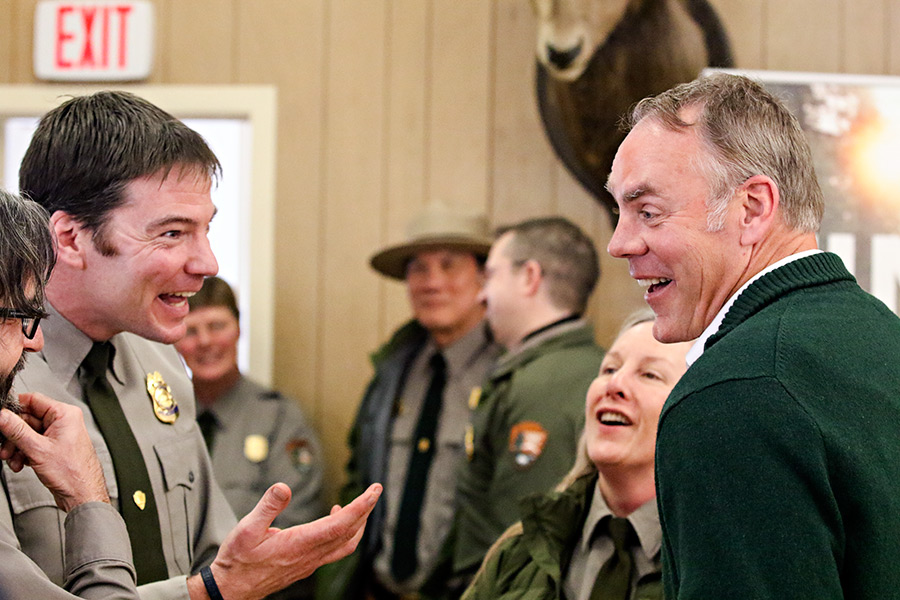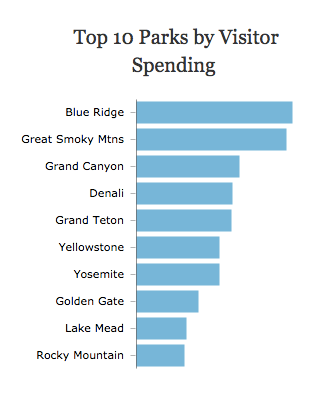Zinke: National Park Visitation Generated $34.9 Billion in 2016
Total visitor spending hit $250.8 million around Glacier National Park, a $51 million spike from 2015
By Dillon Tabish
The record attendance at America’s national parks in 2016 generated an estimated $34.9 billion for the U.S. economy, including $547.8 million in Montana, according to the U.S. Department of Interior.
Ryan Zinke, secretary of the interior and former congressman from Montana, on Wednesday announced the sizable economic contribution that emerged from last year’s centennial celebration for the National Park Service.
The interior department released its annual peer-reviewed report that shows a $34.9 billion contribution, a $2.9 billion increase in economic impact from 2015. Visitor spending supported an estimated 318,000 jobs and provided $12.0 billion in labor income, according to the report.
In Montana, national parks created an economic impact of $547.8 million, an increase of $69.5 million from 2015. Roughly 9,500 jobs were supported by the spending, an increase of roughly 3,000 since 2012, according to the report.
Total visitor spending hit $250.8 million around Glacier National Park, a $51 million spike from 2015. The spending supported roughly 4,300 local jobs and $117.6 million in labor income.
“National Parks are America’s treasure which provide magnificent outdoor recreation opportunities and serve as economic engines for local communities,” Zinke said. “In my own hometown of Whitefish, Montana, I saw how the popularity of Glacier National Park led to growth of the local outdoor rec and eco-tourism industry. And while traveling to Sequoia and Kings Canyon last week it was exciting to see tourism towns dotting the road to the park.”
He continued, “This report is a testament to the tangible economic benefits our parks bring to communities across the nation. Visitation numbers continue to rise because people want to experience these majestic public lands.”
Glacier National Park experienced an historic year in 2016, breaking its annual attendance record for a third consecutive year with 2.9 million visitors, a 24 percent increase over 2015.
Among the visitor spending around Glacier, 33 percent, or $82.8 million, went toward lodging. Restaurants received the next largest amount of visitor spending, 18 percent, or $45.7 million. Gas and transportation ranked third and fourth, respectively, with spending hitting roughly $25 million each. Retail drew 9.76 percent of spending, or $24.5 million, and recreation industries drew 9.5 percent, or $23.8 million.
Yellowstone National Park, which spans Montana and Wyoming, drew the sixth largest amount of total visitor spending with $524 million, an increase of $31 million.

Blue Ridge Parkway in North Carolina ranked No. 1 in visitor spending with $979 million.
More than 270,000 of the jobs supported by visitor spending in 2016 exist in the communities within 60 miles of a park, according to the report.
Most overall park visitor spending was devoted to lodging (31.2 percent) followed by food and beverages (27.2 percent), gas and oil (11.7 percent), admissions and fees (10.2 percent), souvenirs and other expenses (9.7 percent), local transportation (7.4 percent), and camping fees (2.5 percent).
“National parks like Yellowstone, Zion, and Gettysburg connect us with nature and help tell America’s story,” said Michael T. Reynolds, acting director of the National Park Service. “They are also a vital part of our nation’s economy, drawing hundreds of millions of visitors every year who fill the hotels and restaurants, hire the outfitters and rely on other local businesses that help drive a vibrant tourism and outdoor recreation industry.”
America’s 417 sites in the National Park Service experienced record attendance — 331 million visitors — during the agency’s 100-year celebration.
“With continued record visitation it’s time to start thinking about accessibility and infrastructure,” Zinke said. “Last week, it was great to see the team at Yosemite opening up areas with new wheelchair accessible trails. In the coming years, we will look at ways to make innovative investments in our parks to enhance visitor experiences and improve our aging infrastructure. To ensure visitors continue to have great experiences, we will remain focused on increasing access and addressing the maintenance backlog to ensure we are on the right track for generations to come.”
Each year, the interior department studies how NPS visitors spent money in local communities during their trips and compile that data into the annual economic contribution report. The report was prepared by economists Catherine Cullinane Thomas of the U.S. Geological Survey and Lynne Koontz of the National Park Service.
